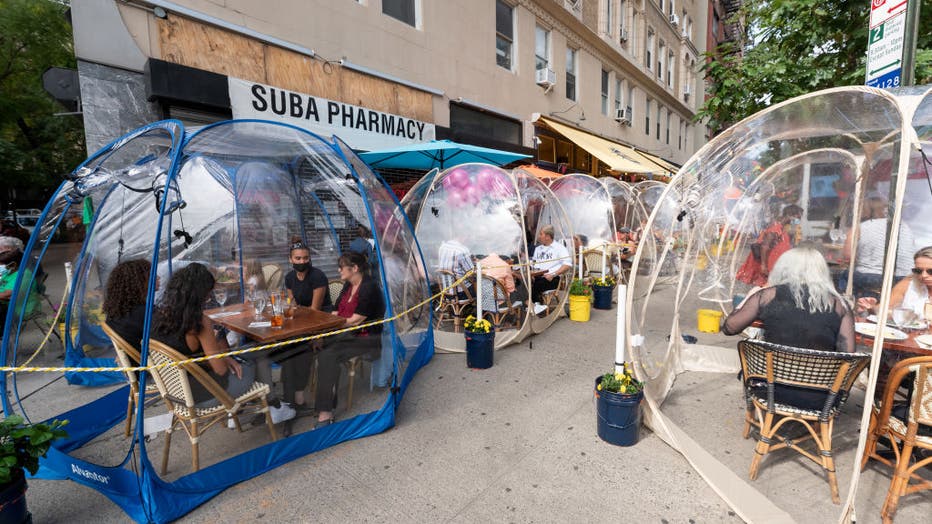Outdoor dining bubbles aren't as safe as you'd think, doctors say
Doctors are bursting the bubble on outdoor dining pop-up pods.
The coronavirus dining trend of inflatable plastic bubbles that keep diners enclosed while eating outside as the mercury drops may not be a safer alternative to indoor dining during the coronavirus pandemic.

NEW YORK, NEW YORK - SEPTEMBER 27: People dine in social distancing bubble tents at the Cafe Du Soleil restaurant on the Upper West Side as the city continues Phase 4 of re-opening following restrictions imposed to slow the spread of coronavirus on S
“The reality is that outdoor dining bubbles are not safer than indoor dining, and may actually increase your risk of contracting Covid-19,” Dr. Robert Glatter, an emergency physician at Lenox Hill Hospital in New York City, told FOX News Thursday.
“The risk posed by lingering aerosols after diners leave a table within an outdoor enclosure constitutes at least some of the potential risk for transmission,” Glatter said.
The clear dining domes, which sell for upwards of $400 on Amazon, can fit up anywhere between two to up to 10 people, depending on the size, and are typically wind-resistant and waterproof. And a number of restaurants across the country have invested in them to provide more seating for guests with capacity limits indoors.
New York City’s Upper West Side restaurant Café du Soleil made headlines last month for inflating plastic bubble dining pods to keep diners warm and socially distant outside. The tents also have the ability to withstand the elements, like rain which often determines whether or not a business can stay open or not during the pandemic with limited seating issues.
Glatter, however, says air particles can remain for up to three hours in an enclosed space with poor air circulation or ventilation. He also notes that surfaces also may not be adequately cleaned between table changes when new diners sit down.
A September study from the Centers for Disease Control and Prevention found that adults who ate outside at a restaurant without enclosures had a higher risk of testing positive for COVID-19.
“Direction, ventilation, and intensity of airflow might affect virus transmission, even if social distancing measures and mask use are implemented according to current guidance. Masks cannot be effectively worn while eating and drinking, whereas shopping and numerous other indoor activities do not preclude mask use,” the CDC noted in the study.
Glatter suggests outdoor dining enclosure bubbles with two walls instead of four to promote better airflow, or for eaters to simply continue with open-air outdoor dining with heat lamps, which, he says, do not increase the risk of transmission.
“It’s safest to eat out in the open, weather permitting, where air circulation from wind currents is optimal. This helps to mitigate risk to acceptable levels. Indoor dining is not advised, even at lower levels of capacity,” Glatter said.

